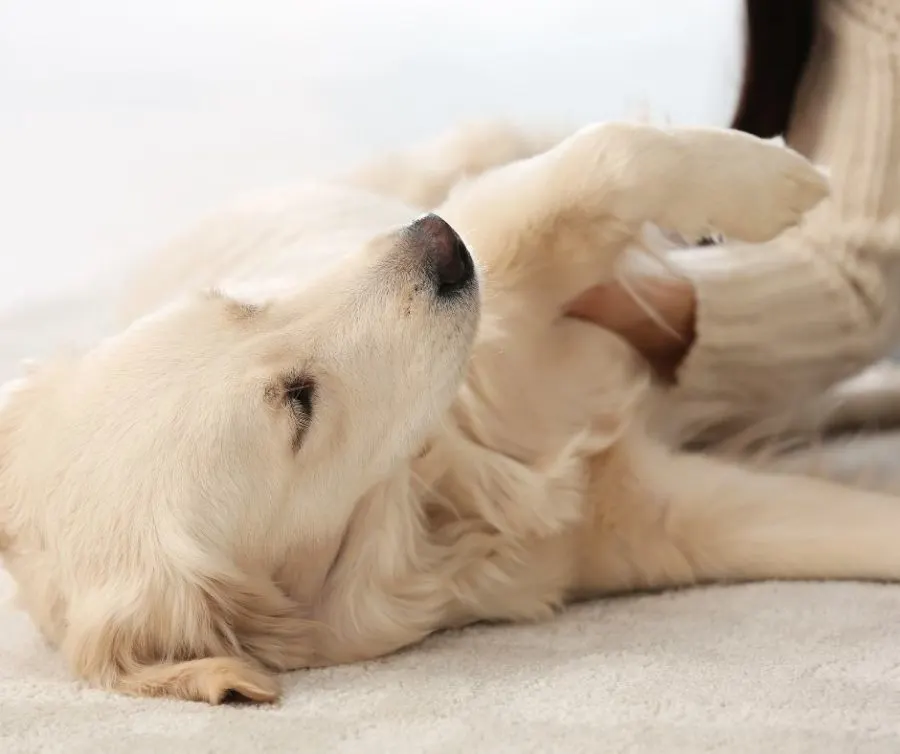Have you noticed that your dog has an unusual skip in his step on dog walks? Today we have a special guest post on patella luxation from a pet chiropractor. Dr. Alisha Barnes of Tails Chiro Care is a dog lover and pet chiropractor with years of experience helping dogs regain their mobility, improve their overall health, and help alleviate their pain. To learn more about Dr. Barnes, visit her website at https://tailschirocare.com/.
Patella Luxation and Chiropractic Care
You may have not heard the term “Patella Luxation” unless you have had a precious pup diagnosed with this condition. It can seem discouraging but there are a lot of alternative and conventional ways to support a pup with this issue.
What is Patella Luxation?

Patella Luxation is a condition where the kneecap (patella) is not sliding properly in the joint. As a result, the kneecap “luxates” or moves out of place.
This can be minor or severe depending on the dog.
A proper diagnosis from a veterinarian is important to determine what grade the patella luxation is or, in other words, how severe it is as this will dictate treatment options.
Which dogs are at risk for Patella Luxation?

Patella luxation occurs most commonly in small dogs like Pomeranians, Yorkshire Terriers and Chihuahuas although it can affect any breed.
It can also affect one leg or both.
What owners first seem to notice, is that their dog “skips” in their back leg(s). This happens when the kneecap slides out of place and gets stuck. Many times, the kneecap can relocate and the pup can go about their business.
However, this chronic sliding in and out of place can wreak havoc on your dog’s knee and cause pain in the knee, hip and back as a result. It can also lead to early arthritis in the affected joint and/or possible cruciate tears (tear in the ligament on the inside of the knee often requiring surgical repair).
How to treat Patella Luxation

But don’t fret, there are lots of ways we can support these precious pups and help them be as comfortable and mobile as possible.
If a pup’s patellar luxation is not severe, physical therapy and chiropractic care can be great tools to help them manage their condition.
For instance, physical therapy exercises can work to strengthen the leg muscles which will in turn support and help stabilize the knee. Laser therapy can also be utilized to reduce pain and accelerate healing of the damaged tissues.
Your veterinarian may also have some nutritional ways to support the body and decrease inflammation such as turmeric and bone broth.
The aim of chiropractic care is to improve the alignment in the pelvis, hip and knee which will allow the femur to sit more symmetrically on the tibia and reduce the chance of luxation from asymmetrical forces. Along with improving alignment, chiropractic adjustments can also help to alleviate back pain that often accompanies patella luxation.
Aligned joints and strong muscles are a great recipe for these pups and will help them enjoy their lives while reducing their pain and discomfort. We have treated many dogs with patella luxation and have seen them get into their golden years with happiness and ease.
However, if the luxation is severe, surgery is sometimes warranted to give them the best chance possible at a normal life. In these cases, physical therapy and chiropractic care can be great options post-surgery to help them recover and heal as quickly as possible.
Patella luxation can seem like such a scary diagnosis but with some TLC and proper management, these dogs can have a great quality of life for years to come.
- Selecting the Best Online Emotional Support Animal Letter Service - December 14, 2023
- How to Store Dog Toys –10 Solutions to Organize Those Toys! - July 7, 2022
- Best Practices to Puppy-Proof Your Home - June 27, 2022
